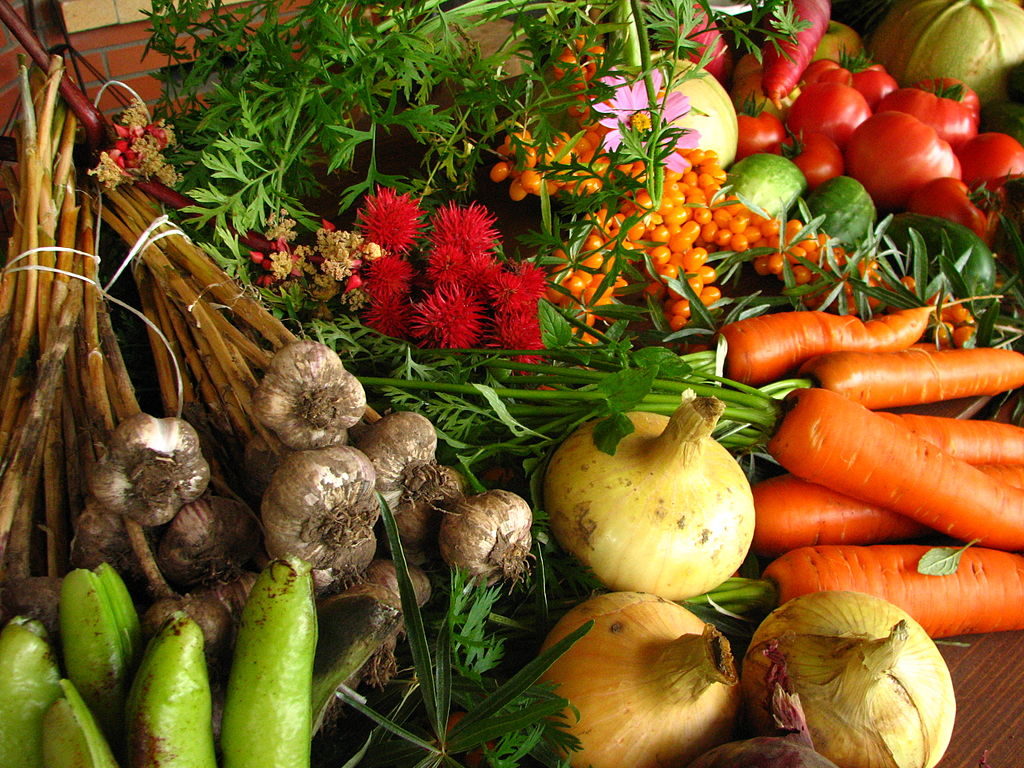Agriculture is at a crossroads. With the rising population and socioeconomic disparities across the globe, it is more important than ever to increase the effectiveness of our food system. What is the best way to grow crops and feed the world? Should we go organic, or is conventional agriculture the only way to meet our needs? This article summarizes a large, comprehensive review of the knowledge we have on organic versus conventional methods and where the authors recommend we go from here.
Ultimately, the authors conclude that the answer is — it depends. Certified organic agriculture works better under some conditions where conventional methods fall short, and conventional methods sometimes outperform organic. This is useful information for farmers who may be considering a transition from one to the other, and need to know which method best suits their situation.
The researchers compared 129 studies and considered nutrition, crop yields, environmental effects, farmer livelihood, and consumer prices. Among the environmental impacts of crops, the researchers looked at water quality, water use, soil quality, impact on wildlife, and air quality.
Crop Yields
Study after study has shown that organic methods have an average of 20% lower yields compared to conventional farming. However, averages do not tell the whole story. Yield stability, which means the ability to count on the same yield from year to year, is generally better with organic agriculture, except in cases of pest outbreaks. Organic farming is more prone to weeds and pest outbreaks, meaning yield stability can be worse in those cases. Therefore, yield stability can be either better or worse for organic. [1. Correction 5/4/2017 from reader feedback.]
Water
Pollution from agriculture is usually from nitrogen and phosphorus. Nitrogen and phosphorus make delicious food for algae and other water organisms that can overgrow and starve water habitats of oxygen. Fish cannot live in oxygen-starved water. Generally speaking, organic agriculture tends to be less harmful to nearby water sources due to lower nitrogen inputs. One open question remains. Which method of farming uses the most water? Areas like Southern California care about that question, because they grow much of the nation’s food but suffer from frequent water shortages. Organic farms do use less water per farm, but because organic methods tend to have lower yields, organic may use more water per crop in some cases. More work is needed in this area, the authors conclude, because the data is conflicting. [2. Correction 5/4/2017 to reflect uncertainty in this area, from reader feedback.]
Soil
Soil health tends to be better on average in organic farming due to the types of fertilizers used on the crops. Because organic farmers rely on manure and compost, the amount of organic matter in the soil is higher on organic farms. Organic matter provides structure to soil that protects against erosion, or the wearing away of soil by water and wind. The authors criticize this conclusion by saying that organic farming requires more labor intensive tilling, or the turning over of soil, which can break up and weaken soil structure. If organic farmers adopt low-tillage practices, the soil quality can be maintained.
Wildlife
There is a trade-off between organic farming yields and benefits to wildlife. Areas of land with lower yields tend to have better biodiversity, and vice versa. This is because land being used for farming would otherwise be used for wildlife habitat. Generally speaking, the authors say that bees and plants benefit the most from organic farming in areas where the landscape has only a few types of vegetation.
Air Pollution
According to this study, greenhouse gas emissions from farms account for 22% of what human society contributes to the atmosphere. Organic farming has higher nitrous oxide and methane emissions per unit of crop yield, which may be related to lower yields compared to fertilizer input. Nevertheless, organic farms use less energy overall to produce crops.
Farmers
Can farmers make a good living from organic agriculture compared to conventional? Yes and no. Organic crops can bring in better farmer income in geographical regions where consumers can afford to pay a premium price. While organic produce requires fewer fertilizers, pesticides, and herbicides, it is more labor intensive and requires that farmers hire workers to ensure competitive yields. The higher price of organic produce is largely due to these increase labor costs. According to the paper, three fourths of organic farms in the world are in low-income countries. Organic farming reduces these communities’ dependence on one type of seed or technique. As far as working conditions for farmers, there is little difference between organic and conventional as both types of farms are capable of exploiting workers.
Consumer Health
The health benefits of organic produce over conventional is a point of controversy. The measurements are full of uncertainty and variability and the data are subject to multiple interpretations. The biggest challenge, even with better measurements, is that few high quality studies have been done on the nutritional value of organic produce over conventional. This makes it difficult to show if the nutritional quality of organic produce is linked to a lower incidence of disease.
Conclusions
Organic farming works best for forage crops, like leafy plants used for animal grazing, in areas where the land has very few types of vegetation, and in areas where farmers can afford the labor expenses. Farmers can also earn more money because organic produce tends to fetch a higher price than conventional. Lastly, when organic farmers do not over-fertilize with nitrogen, organic methods can be safer for nearby waterways than conventional. Organic production is not ideal for grains or large farms that require high yields.
The debate rages on and there is a great deal of uncertainty in our understanding of these two forms of agriculture. Both have their strengths and weaknesses. To feed humanity, we should aim to balance the best of both worlds.


